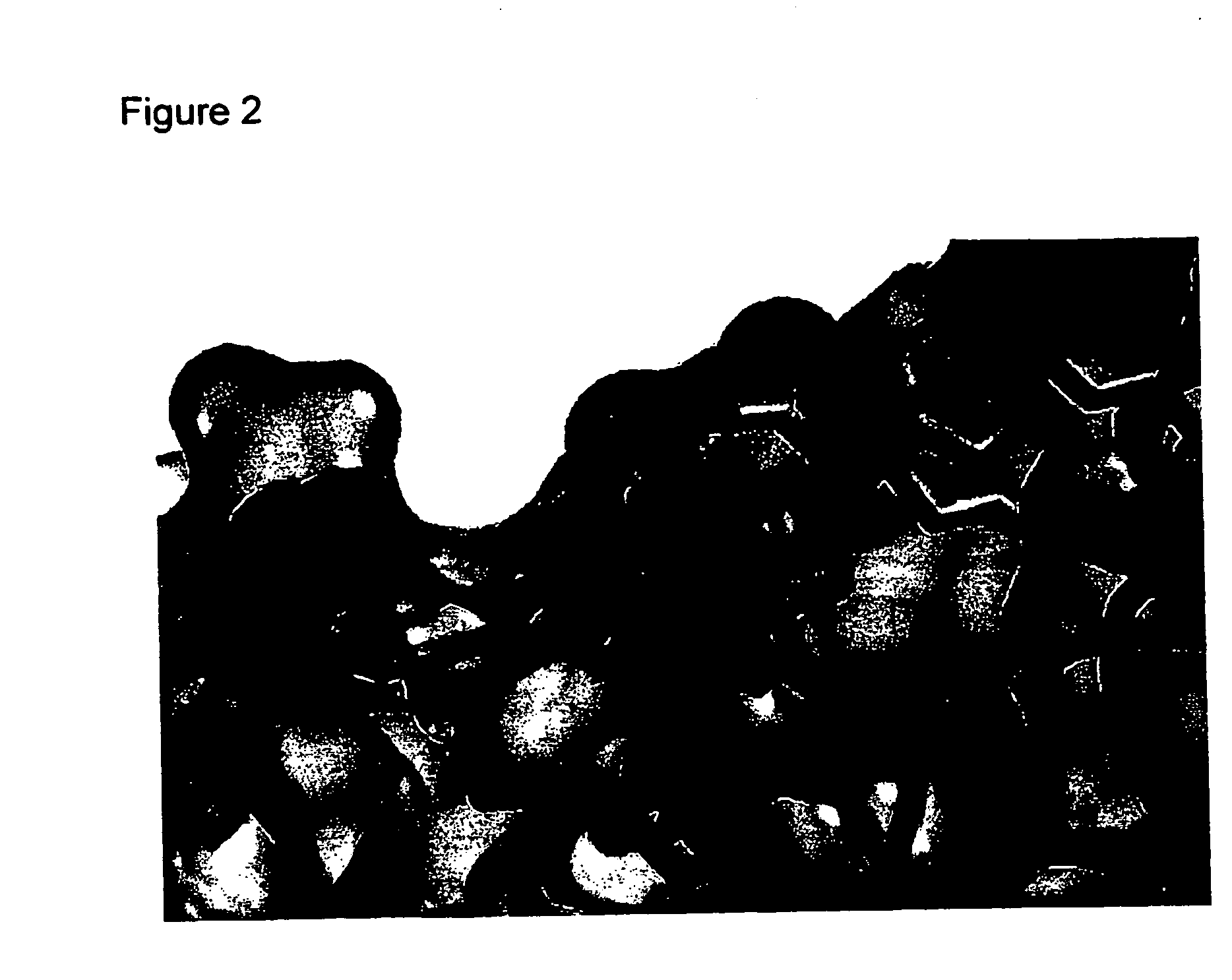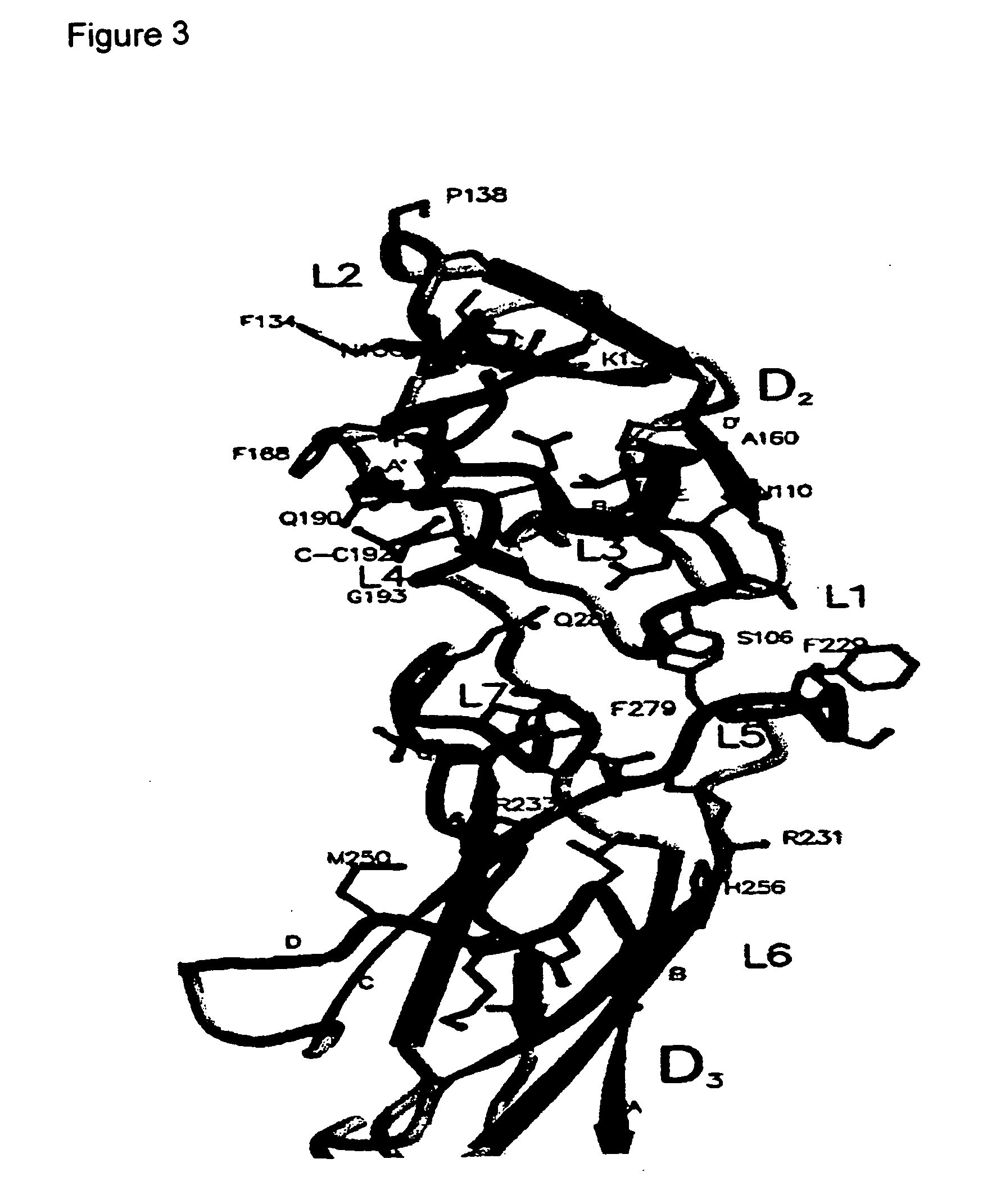Cytokine receptor
a cytokine receptor and receptor technology, applied in the field of cytokine receptors, can solve the problems of impeded design of il-6r complex agonists or antagonists
- Summary
- Abstract
- Description
- Claims
- Application Information
AI Technical Summary
Benefits of technology
Problems solved by technology
Method used
Image
Examples
example 1
Crystallisation and Structural Analysis of sIL-6
Methods
Expression, Purification and Crystallization of sIL-6R
[0287] Monomeric sIL-6R was purified from the conditioned medium of glycosylation defective mutant Chinese hamster ovary (CHO) cell line Lec3.2.8.1 (Stanley, 1989, Mol. Cell Biol. 9: 377-383), transfected with the construct pEE14sIL6RL325, which encodes sIL-6R. Briefly, sIL-6R transformed Lec3.2.8.1 cells were grown in fermentation apparatus with a working volume of 1.25 L (New Brunswick Celligen Plus fermenter, New Brunswick, USA). Conditioned media was concentrated 20-fold by ultrafiltration. sIL-6R was purified from concentrated Lec3.2.8.1 cell media by binding to a 5 mL column of human IL-6-Sepharose. SIL-6R was further purified by preparative size-exclusion chromatography and concentrated to 10 mg / mL using a 10000 MWCO centrifugal concentrator (Centricon, Millipore, USA).
[0288] The protein (8 mg / ml in 5 mM Tris-HCl pH 8.0) was crystallised in hanging drops by vapou...
example 2
Screening for Agonist / Antagonists of IL-6R
In Silico Screening
[0309] The sIL-6R structural information provided in Appendix I was used in an in silico screen for compounds having complementarity to the ligand binding surfaces of IL-6R defined by loops L1-L7. The screen was conducted on compounds in the NCI database using DOCK and in-house ranking and re-scoring protocols. Briefly, the orientation from the docking algorithm considered as the correct orientation was calculated in a normalised rank-by-number strategy (Wang and Wang, 2001, Journal of Chemical Information and Computer Sciences 41(5):1422-6) using scoring functions based on the DOCK energy function (Kuntz et al., 1982, J. Mol Biol 161: 269-288), SCORE (Wang et al, 1988, J Mol Model 4: 379-394), chemscore (Gohlke et al, 2000, J Mol Biol 295: 337-336), potential of mean force (Muegge et al, 1999, J Med. Chem. 4: 379-394), SMOG (DeWitte et al, 1996, J Am Chem Soc. 118: 11733-11744). The scores associated with each are then...
PUM
| Property | Measurement | Unit |
|---|---|---|
| volume | aaaaa | aaaaa |
| pH | aaaaa | aaaaa |
| pH | aaaaa | aaaaa |
Abstract
Description
Claims
Application Information
 Login to View More
Login to View More - R&D
- Intellectual Property
- Life Sciences
- Materials
- Tech Scout
- Unparalleled Data Quality
- Higher Quality Content
- 60% Fewer Hallucinations
Browse by: Latest US Patents, China's latest patents, Technical Efficacy Thesaurus, Application Domain, Technology Topic, Popular Technical Reports.
© 2025 PatSnap. All rights reserved.Legal|Privacy policy|Modern Slavery Act Transparency Statement|Sitemap|About US| Contact US: help@patsnap.com



